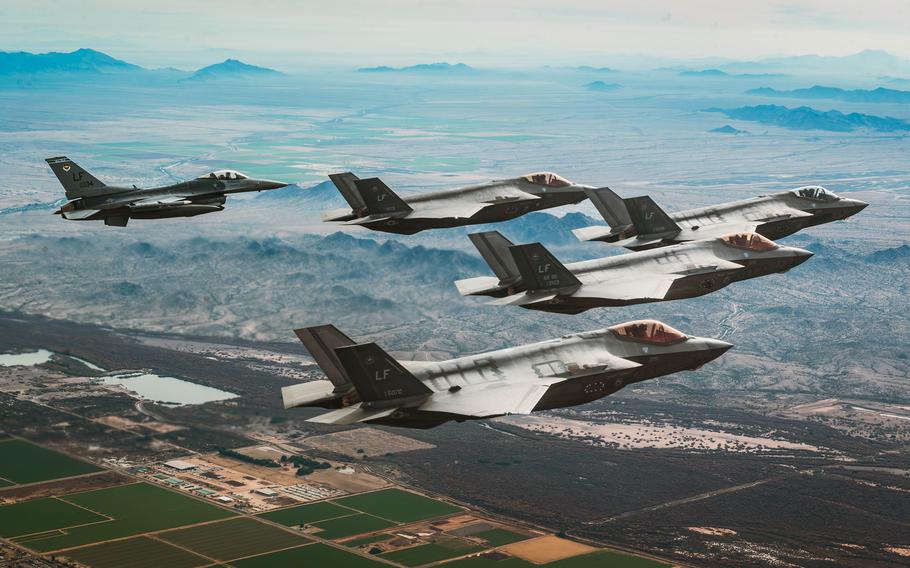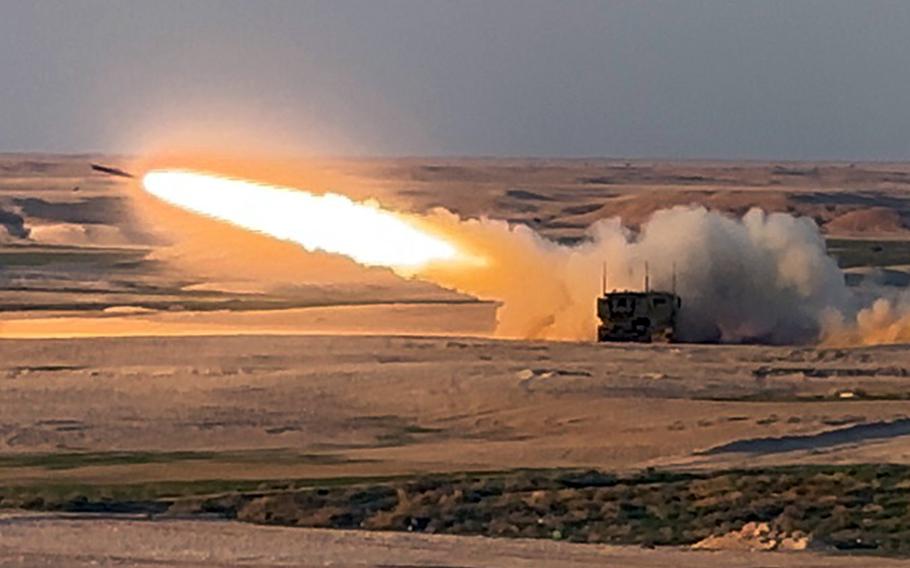
Air Force F-35A Lightning II jets and an F-16 Fighting Falcon fly in formation Jan. 19, 2024, over Luke Air Force Base, Ariz. Global military spending reached a record high of $2.4 trillion last year, up 7% from 2022, the Stockholm International Peace Research Institute said in a report released April 22, 2024. (Katelynn Jackson/U.S. Air Force)
Global military spending reached a record high of $2.4 trillion last year, driven by Russia’s invasion of Ukraine and tensions in other parts of the world, a Sweden-based think tank said Monday.
Spending was up 7% from 2022, marking the steepest year-on-year increase in over a decade, the Stockholm International Peace Research Institute said in a report.
The United States was the world’s top military spender last year, shelling out $916 billion, followed by China and Russia, which spent an estimated $296 billion and $109 billion respectively, SIPRI said.
For the first time since 2009, increases were recorded in all five geographical regions that the institute examines: the Americas, Africa, Asia, Europe and the Middle East.
The rise in overall spending, the highest recorded by SIPRI in its 60-year history, is a response to global deterioration in peace and security, according to Nan Tian, a senior researcher at the institute.
“States are prioritizing military strength, but they risk an action-reaction spiral in the increasingly volatile geopolitical and security landscape,” Tian said in a statement released with the report.
Russia’s military spending last year was up about a quarter from the previous year, SIPRI said, adding that Ukraine’s spending increased by over half during the same period to $65 billion. Kyiv received an additional $35 billion in military aid from other countries, SIPRI said.

A U.S. Army M142 High Mobility Artillery Rocket System fires rounds during an exercise Dec. 11, 2023, at King Khalid Military City in Saudi Arabia. Military spending worldwide reached a record high of $2.4 trillion last year, the Stockholm International Peace Research Institute said in a report released April 22, 2024. (Ellie Waters/U.S. Army National Guard)
NATO accounted for over half of the world’s military spending in 2023, according to the data. All but three European alliance members — Greece, Italy and Romania — were said to have increased their military expenditures over the year amid continued concerns about Russia.
Still, only 11 of 31 members met or surpassed a spending target of 2% on gross domestic product on defense, the highest number since the benchmark for 2024 was set a decade ago.
Sweden, which became the 32nd NATO member in March, has said it is meeting the spending mark. In February, NATO Secretary-General Jens Stoltenberg said he expected 18 members to meet the 2% target by the end of the year.
The war in Ukraine has fundamentally changed the security outlook in Europe, SIPRI researcher Lorenzo Scarazzato said Monday.
“This shift in threat perceptions is reflected in growing shares of GDP being directed towards military spending,” he said.
Elsewhere, war drove the largest military spending hike seen in the Middle East in a decade.
Israel’s spending, the second-largest in the region after Saudi Arabia, grew by 24% to reach $27.5 billion, SIPRI said.
The increase was mainly attributed to Israel’s counteroffensive in Gaza in response to the Hamas attack in October.
Iran, at $10.3 billion, was the fourth-largest military spender in the Middle East last year.
In Asia, China accounted for half of all military spending, and several of its neighbors linked their spending to Beijing’s rising outlay, SIPRI said.
Monday’s report came two days after the U.S. House of Representatives passed a $95 billion package to provide security assistance to Ukraine, Israel and Taiwan. The Senate is set to begin considering the long-awaited bill Tuesday.